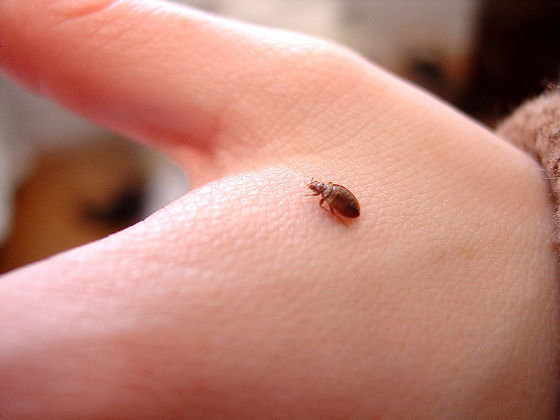Bedbugs have acquired genetic resistance to insecticides, study finds

First evidence of the A302S Rdl insecticide resistance mutation in populations of the bed bug, Cimex lectularius (Hemiptera: Cimicidae) in North America | Journal of Medical Entomology | Oxford Academic
https://academic.oup.com/jme/advance-article-abstract/doi/10.1093/jme/tjaf033/8078368

Researchers find first evidence of potential bed bug insecticide resistance in gene mutation | Virginia Tech News | Virginia Tech
https://news.vt.edu/articles/2025/04/bed-bug-gene-mutation-insecticide-resistance-warren-booth-flsi.html
Bed Bugs Appear to Have a Genetic Resistance to Pesticides : ScienceAlert
https://www.sciencealert.com/bed-bugs-appear-to-have-a-genetic-resistance-to-pesticides
Bedbugs once wreaked havoc in countries around the world, including Japan, but since the 1940s, their numbers have decreased due to the spread of the powerful insecticide DDT (dichlorodiphenyltrichloroethane) and improvements in living environments, and they are now rarely seen in developed countries such as Japan.
However, in recent years, bedbugs have started to become prevalent again in developed countries, and in Japan, cases of bedbugs appearing in hotel rooms etc. are increasing. In 2023, there will be mass infestations of bedbugs in public transport, cinemas, hospitals etc. in France, leading the city of Paris to request the establishment of a national special committee to deal with bedbugs.
Massive bedbug outbreak in France leads to Paris city calling for establishment of national special committee to combat insects - GIGAZINE

In recent years, bedbugs have become resistant to pesticides such as DDT, so a research team from Virginia Tech and other institutions in the United States analyzed the genes of bedbugs to look for genetic mutations that contribute to pesticide resistance.
Pest control companies in 22 U.S. states and four Canadian provinces donated bedbugs for scientific research between 2008 and 2022. The research team sampled one bedbug from each of the 134 unique bedbug populations collected to test for genetic mutations associated with insecticide resistance.
Because bedbugs engage in extensive inbreeding, there is a high degree of genetic uniformity between populations, so by extracting and analyzing just one bedbug per sample, it is possible to determine the genetic makeup of an entire population.

by British Pest Control Association
As a result of the analysis, a genetic mutation called the 'A302S Rdl gene mutation' was found in the bedbugs extracted from the two populations. As a precaution, the genes of the population from which these bedbugs were extracted were analyzed, and it was confirmed that all other individuals also had the same genetic mutation.
The genetic mutation found this time, which is also found in many pest species, including German cockroaches, is linked to resistance to dieldrin , an insecticide developed in the 1940s as an alternative to DDT, but was banned in the 1980s and 1990s because it persists in the environment and poses health hazards.
However, fipronil , which is still used as an insecticide for fleas and cockroaches at the time of writing, has the same mechanism of action as dieldrin, and theoretically, resistance to dieldrin would lead to resistance to fipronil. In fact, German cockroaches that have developed the A302S Rdl gene mutation are also less susceptible to fipronil.
Co-author Warren Booth , an urban entomologist, believes that because fipronil is used as a flea control agent for animals, it may have been left on pet owners' beds when they slept with their pets, causing bedbugs to develop resistance to it. However, it is unclear whether this genetic mutation in bedbugs is a recent event or something that has been happening for a long time.
The next step for the research team is to investigate genetic variation in bedbugs across North America, Europe, and other parts of the world, and to analyze DNA extracted from ancient bedbug specimens in museums.
Related Posts:
in Free Member, Science, Creature, Posted by log1h_ik






